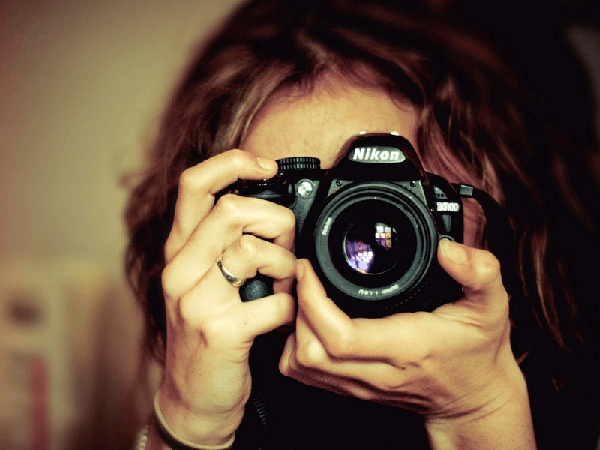Portrait photography is the bread-and-butter product of the typical retail photographer of (almost) all photography niches. Individuals, families, and children are all staple subjects, but there is also a need for both formal and informal portraiture in the corporate and editorial markets. Portraits are frequently required of business executives, entertainers, sports figures, and other celebrities.
Any photographer regularly shooting people should consider offering portraiture photography as a distinct product. In the editorial market portraits shots frequently accompany articles and reports on people in entertainment, lifestyle, business, and in-flight magazines. Many of these publications frequently assign portrait shots rather than use the publicity shots made available by the subject. As a method of increasing awareness of your name, including portrait photography as part of your marketing plan will prove very profitable and rewarding.
Portrait Photography: Doing Things “Differently”
My experiences continue to demonstrate to me that successful portrait photography is about more than new equipment and raw talent. It’s about analyzing your market, establishing your market, and offering a unique, in high demand product.

Fashion Photographer
Digital technology allows photographers to offer a truly unique portrait that is perfectly geared toward an intended market – while at the same time maintaining control of their work.
With this new technology and the right frame of mind, anything is possible for your portraits. Of course, with this new technology comes the demand that the portrait business be done “differently.” For example, formerly retouching was understood to be an added service. Digital puts retouching in the photographer’s hands. Clients are well aware of this. When they notice things like oily skin, exit signs in the background, and threads and lint on their clothing in their cherished photographic images, they will view your work as inherently weak and less marketable. They often expect you to “automatically” offer this service.
Also, more and more, clients are expecting to receive the digital versions of their portraits. Unfortunately, far too many photographers are “giving away” their ownership rights and are actually giving their digital images away! This has dramatically impacted the wedding photography industry, for example. Many long-time wedding photographers are leaving the wedding photography industry because they feel that prices are dropping along with quality and value too rapidly to make it worth the trouble.
It seems that everyone has, at least, one digital camera! Doesn’t it? On the surface, that can frighten any aspiring photographer. Seems like too much competition!
Consider this: almost everyone lives in a dwelling that has a kitchen. Yet, new restaurants continue to open all the time!
Why is this? Because great chefs know that, all things being equal, they can produce a better product every time! They’re aware of how establishing their uniqueness separates them from “all the rest.” They feel like a “diamond in a sack of broken glass.” Portrait photographers need to adapt a similar mindset in developing their skills, style and reputation.
Fashion Photography Tips: Planning the Shoot
Once your client is ready to schedule their session, you should outline the steps that can be taken to ensure the best possible outcome. Here are a few suggestions:
Clothing
Most clients require some help in selecting clothing that works well for portraits. However, if working with a brand or label you won’t have this problem as stylists and dressers will be on-hand to help you with your shoot. Lisa Bennet from Wiseman Clothing fashion manufacturers explains this; “Brief your clients on what works and what doesn’t work. Do this before the day of the session. Having a run through with the model saves so much time in the long-run.”
Here are a few clothing suggestions to share with your clients:
- Choose outfits that fit the personality
- Avoid heavy patterns or stripes. Anything with a crisscross pattern or tightly woven pattern can cause unwanted patterns in digital portrait photography.
- Make sure that the clothing of all of the subjects is color coordinated when shooting group portraits. Solid, neutral colors look best.
- Try to avoid short skirts or shorts. This makes posing more difficult. Long, flowing dresses, jeans, or khakis make better selections.
Props for Children’s Portrait Photography
Often a few simple items can add a lot of impact to portraits. Hats, sunglasses, and similar items can add to children’s portraits. Also, many children portrait photographers feel clothing that encourages role playing – a chef’s hat, firefighter’s jacket, or any such gear can inspire a great portrait.
With babies and toddlers, large props like a bassinet, oversized flowerpot, basket, wagon wheel, or birdbath can serve as seating devices and add a lot of dimension to the portrait.
I have a tendency to break those rules. For my taste and style, I prefer to use minimum props in portraits. For me, they distract from the subject of the portrait. Experiment and determine what works for you.
Family Portrait Photography Props
Props can add a lot of interest to family portraits as well. This can make your portrait unique. Your props are limited to your imagination and their availability. A musical instrument, furniture, a basket, or even pets may work
Larger objects also work. Boats, sports cars, planes or motorcycles, are good examples of large objects. A portrait of a parent and child with a few simple props – like a bedtime storybook and a favourite stuffed animal – can be charming.
Personalised Portrait Photography
My portrait photography style relies heavily on capturing the subject’s personality. My best images deliver a lot of impact. At the very beginning of the session, I put all of my efforts into relaxing my subject. Without their relaxing they won’t display confidence when posing. Without confidence, I very rarely produce good portraits. Consequently, I put ALL of my efforts into relaxing my subject.
One of the activities that I do that seems to help my subjects relax is that I assume posing positions and physically demonstrate some of the poses that I want them to take. This activity works exceedingly well, for me (honestly, I don’t understand why it works so well, it just does)!
Also, I ask them if they have some specific poses in mind. I do this even though I conduct an interview with them before the portrait session and generally know the purpose of the portraits. Asking them questions that I know they have answers to reduces their nervousness. This nervousness applies to all subjects. I have had powerful leaders of industry act like bashful school boys at their first dance!
With the immediacy of digital technology, we are able to take more “risks” when shooting. Being able to view the image instantly allows us to experiment with lighting, time exposures, silhouettes, etc.
Learn what your unique style is. And then practice the techniques that will sharpen your skills and establish your style as well as increase your popularity as a portrait photographer or whatever niche you choose.




